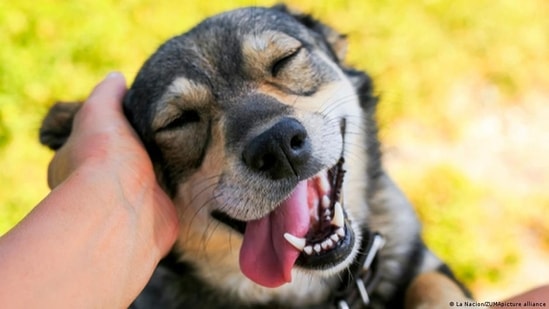
We have all seen videos of excited dogs, wagging their tails and jumping to lick their owner’s faces when reuniting with them. A new study suggests dogs experience happy tears as well.
The study has revealed that during this reuniting moment, dogs tend to get more teary-eyed than usual. Reportedly, the study published by Japanese scientists in the journal Current Biology states that dogs tear up with joy and happiness whenever they are reunited with their owners after a prolonged period of absence.
Dogs shed tears associated with positive emotions: Study
“We found that dogs shed tears associated with positive emotions. We also made the discovery of oxytocin as a possible mechanism underlying it,” said one of the authors related to the study.
While dogs have been known to have tear ducts similar to humans, they have been primarily studied for their physiological functions, to keep eyes clean and healthy. This is perhaps the first study to link tears in dogs to an emotional response, according to the authors of the study.
The team of scientists used a test called the Schirmer Tear Test to gauge its hypothesis on 20 dogs. In the test, a paper strip is placed inside the eyelid of the furry pets for a minute before and after they were reunited with their owners.
To make the results more comprehensive and true, the scientists used a normal meeting of the dog and its owner as the baseline. Afterward, both readings were compared, allowing the scientists to make an informed inference.
How did they get the idea?
One of the researchers of the study, Takefumi Kikusui decided to study dog tears after watching one of his two poodles get teary-eyed.
“I have two standard poodles and I had one female pregnant six years ago,” Takefumi Kikusui, a professor at the Laboratory of Human-Animal Interaction and Reciprocity at Azabu University, told.
Noticing her face was more tender than usual when nursing her puppies, Kikusui realized her eyes were teary. “That gave me the idea that oxytocin might increase tears,” he added. “We previously observed that oxytocin is released both in dogs and owners when interacting. So we conducted a reunion experiment.”






